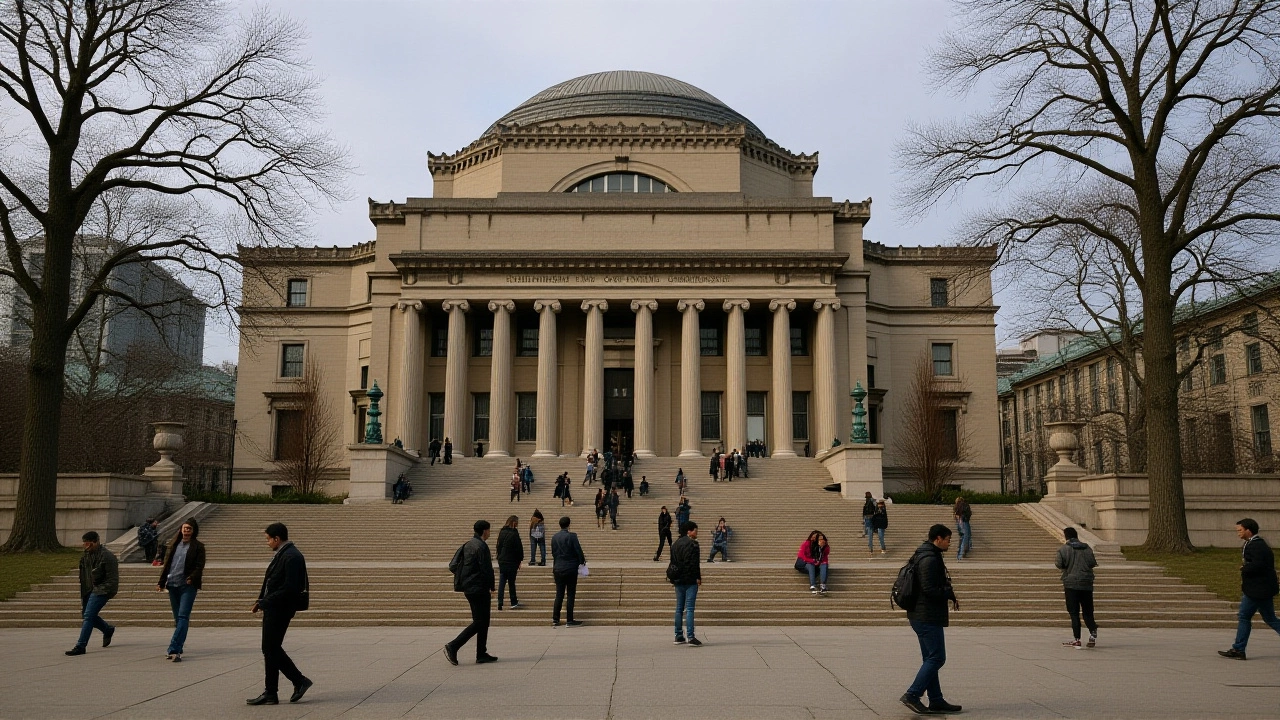For the first time in over a decade, the flow of new international students to U.S. colleges has turned sharply negative. the Institute of International Education (IIE)’s Fall 2025 Snapshot reveals a stunning 17% drop in new international enrollments — a collapse that’s already costing the U.S. economy over $1.1 billion and nearly 23,000 jobs. The numbers, gathered from surveys of hundreds of universities during the fall 2025 term, contradict earlier optimism based on visa issuance data. What was expected to be a modest recovery has instead become a full-blown crisis in global higher education recruitment.
Why the Drop? Visa Fears and Travel Hurdles
Behind the numbers are real fears. Of the institutions reporting enrollment declines, 96% cited visa application concerns as the top reason. Students from India, China, and Bangladesh — once eager applicants — are now hesitating, unsure if their applications will clear U.S. consular reviews. Many report delays stretching beyond six months. Another 68% pointed to travel restrictions, including sudden policy shifts and heightened scrutiny at ports of entry. One university admissions officer in Ohio told us, "We had 120 confirmed students from Pakistan last year. This year? Seven showed up. The rest just vanished after their visa interviews."
The twist? These aren’t random incidents. They’re part of a broader pattern. Since early 2025, U.S. embassies have reduced interview slots by nearly 30% in key countries, while processing times have doubled in places like New Delhi and Beijing. Students who once booked flights months in advance are now waiting until the last possible moment — if they go at all.
Who’s Losing the Most? Graduate Students and Non-Degree Programs
The pain isn’t spread evenly. Graduate enrollment fell 12%, and non-degree student numbers dropped 16% — both groups that spend significantly more than undergraduates. A single international graduate student typically pays $45,000 in tuition, lives off-campus, brings dependents, and spends thousands more on local goods and services. Non-degree students, often enrolled in intensive English or pre-professional programs, contribute even more per capita. Their absence is felt in college towns from Ann Arbor to Austin.
Undergraduate enrollment, by contrast, rose 2% — a small buffer. Why? Many undergrads made their decisions earlier, applying in 2024 before the latest policy tightening. Their visas were processed before summer 2025, when administrative changes began to ripple through the system. "It’s like we got a last-minute reprieve from a storm that hit everyone else," said a counselor at the University of Minnesota.
Shifting Strategy: Recruitment Goes Into Overdrive
While some schools are cutting back, others are fighting back. Institutions reporting enrollment gains cited two key tactics: active recruitment (71%) and personal outreach to admitted students (54%). Schools are now hiring dedicated international admissions officers, hosting virtual town halls with alumni abroad, and even flying recruiters to cities like Hanoi, Dhaka, and Mumbai.
Geographically, the focus has shifted. 57% of institutions are targeting India — no surprise, given its large, educated youth population. Vietnam (32%), China (28%), and Bangladesh (28%) are next on the list. But there’s a quieter trend: 50% of schools are now recruiting international students already in the U.S. — those on tourist visas, exchange programs, or even high school students — and helping them transfer. It’s cheaper, faster, and avoids the visa bottleneck entirely.

The Deferral Lifeline
More than 72% of institutions are offering deferrals to Spring 2026, and over half are extending them to Fall 2026. This isn’t just kindness — it’s survival. By holding spots open, schools keep students in the pipeline, hoping visa conditions improve. But it’s a gamble. Many students, especially those from countries with unstable political climates, may never return. "We told a student from Nigeria she could defer. She’s now enrolled in a university in Canada," said an advisor at the University of Washington.
Economic Fallout: Beyond Campus Borders
The $1.1 billion loss isn’t just about tuition. It’s about the local laundromat that lost its international student customers. The apartment complex that now has 30% vacancy. The grocery store that stopped importing international brands because demand vanished. The 23,000 jobs? They’re not just professors and administrative staff. They’re baristas, bus drivers, IT technicians, and campus security officers — many of them local residents.
Even with inflation at 3%, it wasn’t enough to offset the loss. Graduate and non-degree students spent more per person than ever before — and now they’re gone. "We used to count on these students to keep our dining halls open after 8 p.m.," said the director of housing at the University of Illinois. "Now we’re shutting down two of them."

What’s Next? The Open Doors Report Holds Clues
The NAFSA: Association of International Educators, working with JB International, is preparing its full Open Doors 2025 report, due in November. But the early signs are grim. The 1% overall decline in international enrollment — including OPT students — masks a deeper structural shift. More students are staying in the U.S. on OPT instead of enrolling in degree programs, meaning less tuition revenue and less campus spending.
Meanwhile, competitors are stepping in. Canada’s international student intake rose 12% last year. Australia, the UK, and Germany are all reporting record numbers. "The U.S. used to be the default choice," said a higher education analyst in London. "Now it’s the last resort."
What’s Being Done?
There’s no federal response yet. No task force. No policy reset. Universities are acting alone — lobbying Congress quietly, retraining staff, and redesigning recruitment materials to emphasize safety and stability. Some are partnering with visa consultants to guide students through the process. But without coordinated federal action, experts warn, the damage could become permanent.
Frequently Asked Questions
How does this affect U.S. universities financially?
The 17% drop in new international students has led to an estimated $1.1 billion in lost revenue, primarily from tuition, housing, and dining. Graduate and non-degree students — who pay the highest rates — saw the steepest declines, with some schools reporting budget shortfalls of 15-20%. Many institutions are now cutting programs, delaying hires, or reducing campus services to compensate.
Why are students choosing other countries over the U.S.?
Canada, Australia, and the UK now offer faster visa processing, clearer post-study work rules, and perceived political stability. Many students report being discouraged by U.S. visa delays, inconsistent policies, and negative media coverage. In India, for example, 40% of students who applied to U.S. schools last year switched to Canadian universities after their visa was delayed beyond six months.
What’s the long-term impact on U.S. innovation and global influence?
International students make up nearly half of all STEM PhD graduates in the U.S. Their departure could weaken research output and startup ecosystems — particularly in tech hubs like Silicon Valley and Boston. Many become entrepreneurs, scientists, or engineers who stay and contribute to the U.S. economy long-term. Losing this pipeline risks ceding global leadership in innovation to countries actively courting talent.
Are U.S. universities doing enough to recover?
While some schools are innovating — offering deferrals, recruiting students already in the U.S., and targeting new markets — most lack the resources for large-scale campaigns. Without federal support — like restoring visa interview capacity or creating a national recruitment strategy — these efforts are fragmented and insufficient. The decline is systemic, but the response remains piecemeal.
What role did the summer 2025 policy changes play?
Summer 2025 saw abrupt shifts in visa adjudication standards, especially for students from certain countries. Consulates reduced interview slots, introduced new security screenings, and delayed approvals without explanation. Many students who had been accepted months earlier received visa denials just weeks before orientation. This timing — right before the fall semester — left schools scrambling and students stranded.
Will international student numbers bounce back in 2026?
Not without major changes. Even with deferrals, many students are now enrolled elsewhere. The 72% of schools offering Spring 2026 deferrals may see only 40-50% of those students return. Recovery will depend on U.S. policy clarity, faster visa processing, and rebuilding trust. Without those, the 2025 decline could become the new baseline — not a temporary dip.
